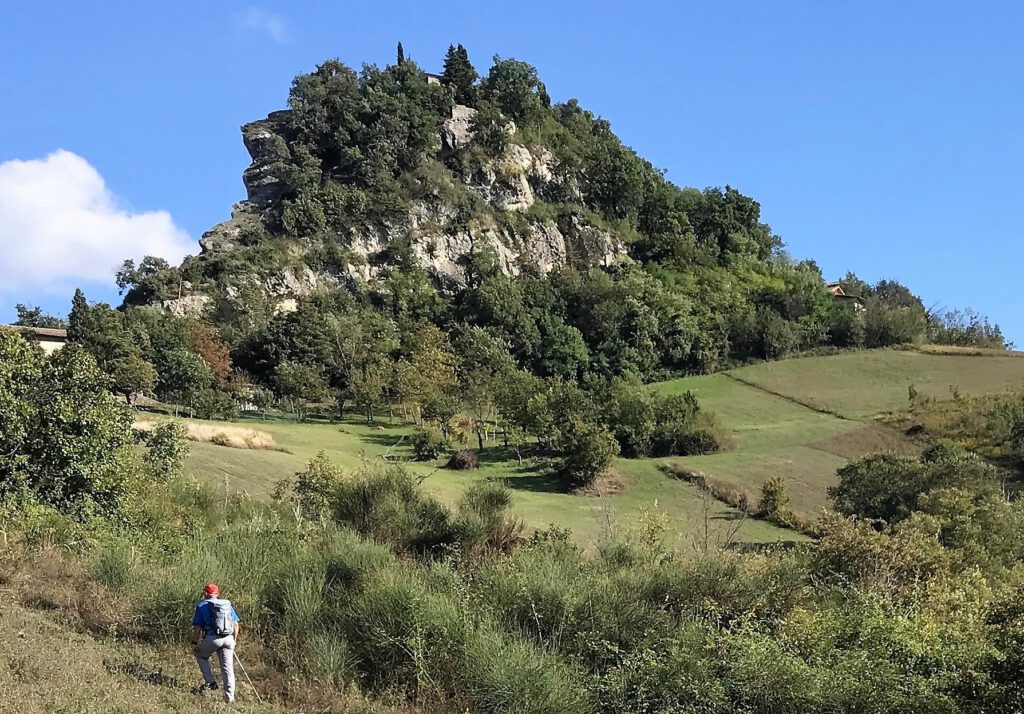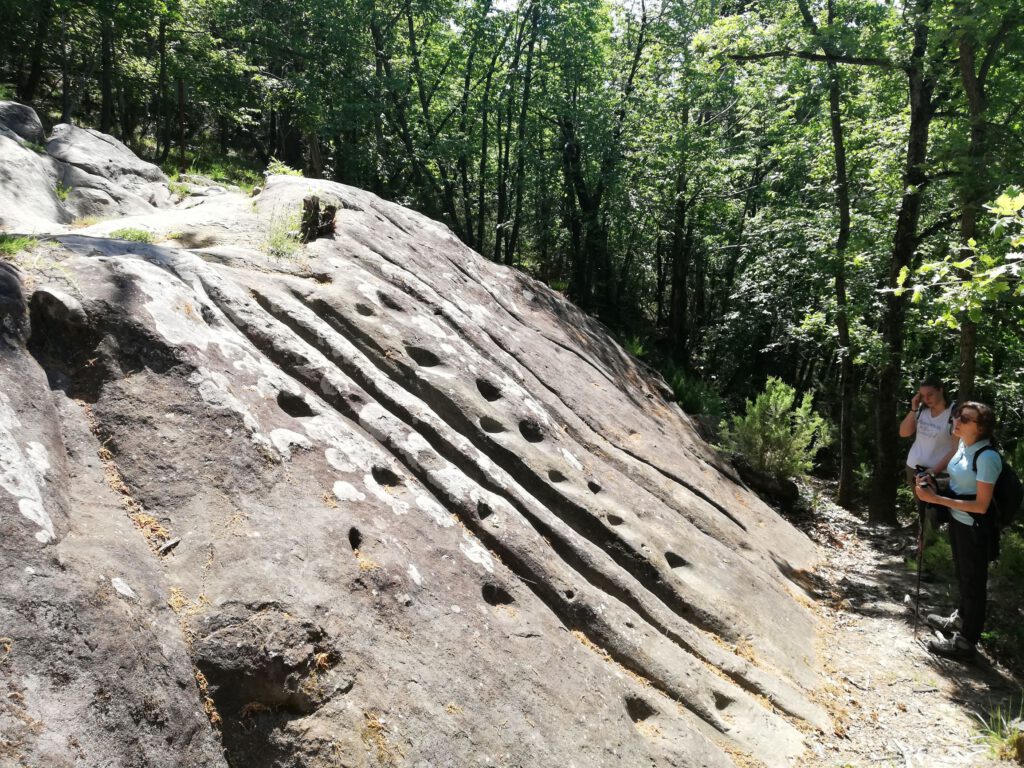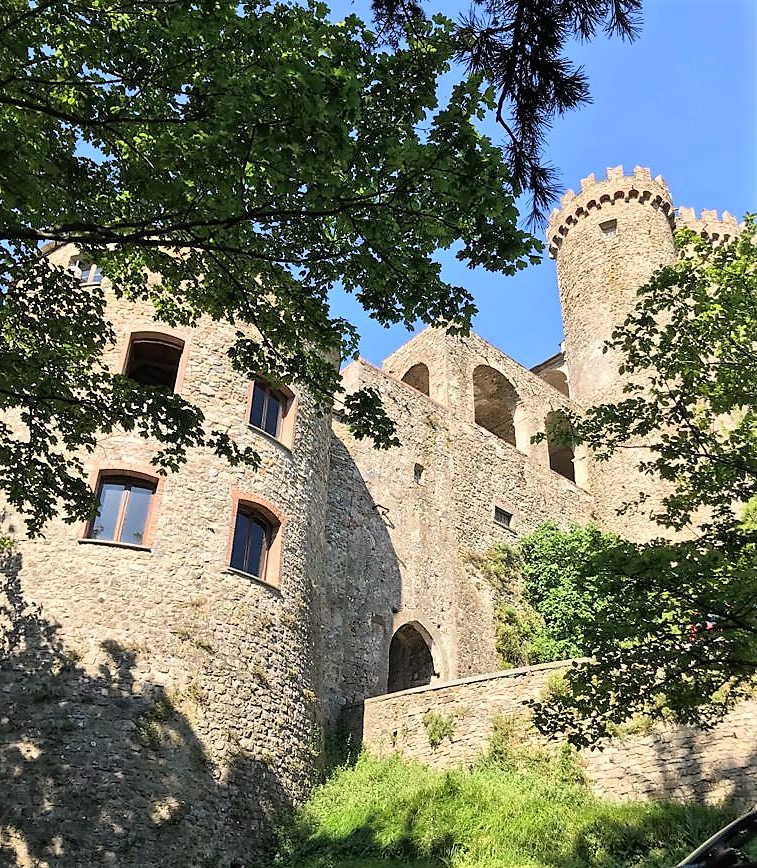Camminare nella Storia tra Uomo e Natura in Emilia e Lunigiana
Un sentiero nella natura
Un lungo viaggio nel cuore del Parco Nazionale dell’Appennino Tosco Emiliano, attraverso il confine climatico ed agro-alimentare tra Europa continentale e Mediterraneo, incontrando tutte le fasce vegetazionali dell’Appennino e con esse i substrati geologici che hanno modellato le forme di questo straordinario territorio, a volte dolce e ospitale altrove roccioso e selvaggio, scavato da torrenti e inciso di calanchi. Nel suo percorso il Sentiero dei Ducati interecetta o attraversa
- il Paesaggio Protetto Collina Reggiana Terre di Matilde,
- la Riserva Naturale della Rupe di Campotrera,
- Il Parco Regionale delle Alpi Apuane
- varie aree SIC (siti naturalistici di interesse europeo)
oltre ad essere compreso per buona parte all’interno della Riserva di Biosfera MAB-UNESCO dell’Appennino Tosco Emiliano.

Sulle Tracce della Storia
Il Sentiero dei Ducati attraversa un territorio teatro di eventi che hanno segnato la storia dell’Europa e dell’Italia.
il “Sentiero dei Ducati” deve il suo nome agli antichi confini che a partire dal 1500 dividevano il Ducato Estense di Modena e Reggio da quello di Parma e Piacenza oltre che da quelli della Toscana. Tortuosi ed imbricati, più volte modificati dalla storia, questi confini furono anche “internazionali” all’epoca in cui divisero l’impero francese dal Regno d’Italia. Ma non è certo solo dell’epoca dei Ducati che conserva tracce importanti. Il tracciato segue infatti antichissime direttrici che, seguendo le valli dei fiumi Enza e Magra, fin dall’antichità univano il Tirreno alla Pianura Padana e all’Adriatico, percorse da soldati e cavalieri, mercanti e uomini di chiesa che ovunque hanno lasciato, nei secoli, straordinarie testimonianze del loro passaggio. Basti pensare alle statue-stele della Lunigiana che testimoniano un megalitismo comune a molte popolazioni pre-protostoriche dell’Europa. O il sito protostorico del Monte Lulseto, in terra reggiana, forse dedicato alla venerazione della Fertilità e della Madre Terra, recentemente scoperto dal Comitato Scientifico del CAI.

Poi i molti resti di antichi insediamenti etruschi e romani, ed i castelli dei “Da Canossa”, luogo simbolo del Medioevo ove nel gelido inverno del 1077 al cospetto della gran contessa Matilde, l’imperatore Enrico IV si umiliò a Papa Gregorio VII, segnando per sempre le sorti dell’Europa. Ancora, i tanti borghi e castelli che la nobile casata dei Malaspina, discendente dagli Obertenghi, eresse in Lunigiana e si contese e divise nei vari rami famigliari (dello “Spino Secco” e dello “Spino Fiorito”) spesso contendendo il territorio con il vescovo di Luni, i Genovesi ed i Fiorentini, prendendo anche parte alle guerre tra Guelfi e Ghibellini ed ospitando più volte Dante durante il suo esilio in Lunigiana cosicché il Sommo Poeta si rivolse a Corrado Malaspina il Giovane nell’VIII Canto del Purgatorio, citandolo per riconoscenza nei confronti della sua famiglia. Ed infine Luni, antico ed importantissimo porto romano sul Tirreno, di cui ancora permangono vestigia conservate nel locale museo e area archeologica.

Collegamenti con altri Cammini
Il Sentiero dei Ducati è un asse escursionistico che collega tra loro importanti altre vie e cammini, contribuendo non solo ad ampliare la rete dei Cammini dell’Emilia Romagna ma anche fungendo da raccordo con cammini di lunga percorrenza transregionali e transnazionali.
Il Sentiero dei Ducati intercetta la Via Francigena a Luni dopo aver intersecato in territorio Emiliano dapprima la Via Matildica del Volto Santo e poi la Via dei Linari presso il Passo del Lagastrello. Ma non solo: nel territorio attraversato dal Sentiero dei Ducati si incrociano e sovrappongono gli antichi cammini che portavano a Roma con più moderni itinerari escursionistici quali il Lunigiana Trekking, il Sentiero Italia CAI e la ciclovia VENTO, per citare i più famosi. Inoltre, la capillare rete locale dei sentieri CAI (solo in territorio reggiano ben 1200 km) crea una ricchissima viabilità per un turismo lento, per chi ami camminare o pedalare su antiche tracce circondato di una natura sorprendentemente spettacolare e da storia.
I luoghi del gusto (aspetti enogastronomici)
Il Sentiero dei Ducati offre al viandante la possibilità di godere di alcune delle cucine tradizionali più rinomate d’Italia, in una terra nota nel mondo intero anche per i suoi straordinari prodotti alimentari.
In Emilia si possono gustare non solo le “star” gastronomiche come il Parmigiano Reggiano, l’Aceto Balsamico Tradizionale, ma anche i Capelletti in brodo, i Tortelli verdi e di patate, i funghi, la Pasta Ragia, le Tagliatelle, l’Erbazzone, senza dimenticare tutti gli altri famosi salumi emiliani gustati con il gnocco fritto e le tigelle e accompagnati da un bicchiere di tradizionale Lambrusco.E per finire la famosa Zuppa Inglese (che a discapito del nome ha invece origini emilianissime), la Torta in Cantina e la reggianissima Torta di Riso.

In Lunigiana la cucina è invece il risultato della fusione di diverse tradizioni provenienti dalle regioni confinanti, in particolare Liguria e Toscana. Materie prime povere, come le erbe spontanee che crescono nella zona, sono alla base della prelibata Torta d’Erbi, la farina l’acqua e il sale, che uniti danno magicamente i Testaroli, forse il piatto più famoso della Lunigiana con i Panigacci, da mangiare con formaggi freschi e salumi, ma anche l’Agnello di Zeri, buonissimo arrosto con patate e per quanto riguarda i dolci il Buccellato e gli indescrivibili e cremosi Amor Pontremolesi.
Le castagne, i cui alberi coprono entrambi i versanti dell’Appennino, sono poi le protagoniste indiscusse di molti piatti lungo l’intero percorso del Sentiero dei Ducati.
